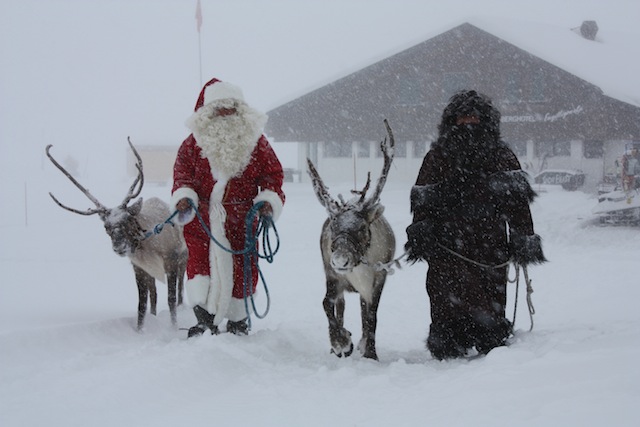
Every country has its traditions and rituals and one of the more quirky and oddly satisfying of the Swiss Christmas season is Schmutzli.
Just like Venom to Spiderman, Dr. Moriarty to Sherlock Holmes and Magneto to Dr. Xavier, Schmutzli is a more sinister counter point to the good that Santa represents.
The answer to how this tradition came about is once again representative of another classic battle between Christianity and paganism. Originally it was a pagan ritual called Perchten which involved good spirits driving out the bad old spirits. With Samichlaus taking the Christian “good” role Schmutzli some how managed to evolve into the dark figure.
Samichlaus is not Santa Claus however and the celebration of “St Nicolas Day”is on the 6th of December, while both Christmas and St Nicolas Day both have the same origins they take on different forms, with the latter having much more in common with its original tradition of paganism than its commercialised American brother.
What is personally appealing about this tradition is the fact that it actually give children something to fear at Christmas. No longer is the classic taunt “Santas’ watching” applicable, the phrase “Schmutzli is watching” has far more fear behind it, and only rightly so, the black faced nemesis is associated with stealing children, carries a broom of sticks with which to hit misbehaving children and is even called Père Fouettard or Father ‘Whip’ in the French speaking part of Switzerland.
Local teenagers have even been known to dress up as groups of Schmutzli’s and go around implementing their own style of vigilante Christmas justice on younger children.
All Christmas songs now have a new tune
You better watch out
You better not cry
Better not pout
I’m telling you why
Schmutzli is coming to town
He’s got a stick, And he’ll whip you twice;
It doesn’t matter if you’re naughty or nice Schmutzli is coming to town
He’ll steal when you’re sleeping, He’ll whip you when you’re awake He knows if you’ve been bad or good, So run for goodness sake!
O! You better watch out! You better not cry Better not pout, I’m telling you why
Schmutzli is coming to town Sounds like excellent incentive for good behaviour from children to me.
